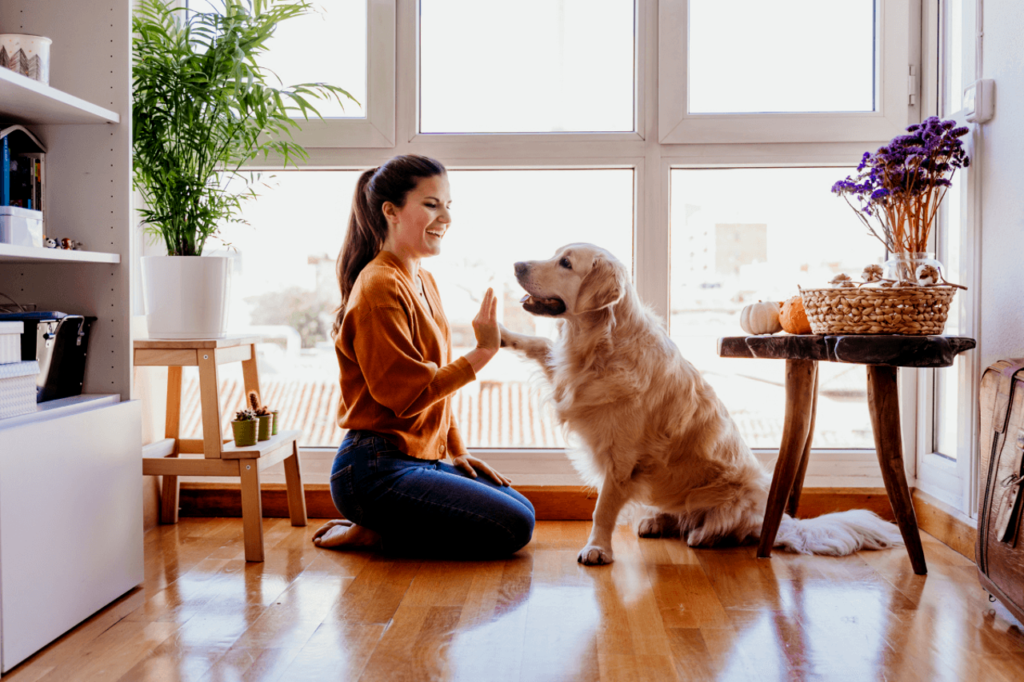
Pet Therapy in Elder Care
Pet therapy, also known as animal-assisted therapy, is gaining significant recognition in the realm of elder care. As the elderly population continues to grow, finding innovative and effective ways to enhance their well-being becomes paramount. In this article, we explore the multifaceted world of pet therapy, shedding light on its benefits, implementation in elder care facilities, and the various types of animals involved.
Read More: The Impact of Pet Therapy
Pet Therapy in Elder Care

In the quiet corridors of elder care facilities, a subtle but transformative revolution is taking place – pet therapy. Defined as a guided interaction between a person and a trained animal to help improve the individual’s physical, emotional, and social well-being, pet therapy is making waves in providing comfort and joy to seniors. The undeniable bond between humans and animals has prompted a surge in the utilization of this therapeutic approach, especially in catering to the unique needs of the elderly.
Benefits of Pet Therapy for Elderly Individuals
Improving Mental Health
The soothing presence of animals has a profound impact on the mental health of elderly individuals. Loneliness and depression, common challenges in elder care, can be alleviated through regular interactions with therapy animals. The unconditional love and non-judgmental companionship they offer create a sense of purpose and joy.
Enhancing Physical Well-being
Beyond mental health, pet therapy has tangible effects on the physical well-being of seniors. Activities such as walking a dog or gently petting a cat can contribute to increased mobility and exercise. Studies have shown a correlation between pet therapy and improved cardiovascular health, showcasing the holistic benefits of this approach.
Providing Companionship
One of the primary advantages of pet therapy in elder care is the companionship it provides. Seniors often face isolation, either due to physical limitations or the loss of friends and family. Therapy animals become constant companions, offering a source of comfort and reducing feelings of loneliness.
Types of Animals Used in Pet Therapy
Dogs as Therapy Animals
Dogs, with their innate ability to connect with humans, are the most common therapy animals. Their friendly demeanor and trainable nature make them ideal companions for the elderly. Whether it’s a small lap dog or a larger, more active breed, the presence of a dog can bring immeasurable joy to seniors.
Cats and Their Calming Influence
Cats, known for their independent yet affectionate nature, offer a different kind of companionship. Their purring has a calming effect, reducing stress and anxiety in elderly individuals. Cat therapy is particularly beneficial for those who may prefer a quieter, less energetic interaction.
Birds and Small Animals in Therapy
In some cases, smaller animals such as birds, rabbits, or guinea pigs are used in pet therapy. Their manageable size and unique characteristics make them suitable for seniors with varying preferences. The gentle chirping of a bird or the soft fur of a rabbit can provide sensory stimulation and emotional comfort.
Implementation in Elder Care Facilities
Incorporating Pet Therapy Programs
To harness the benefits of pet therapy, elder care facilities are increasingly incorporating structured programs. These programs often involve scheduled visits from therapy animals and their handlers. The goal is to create a positive and engaging environment that enhances the overall quality of life for residents.
Trained Professionals and Volunteers
Ensuring the success of pet therapy programs requires the involvement of trained professionals and dedicated volunteers. Handlers of therapy animals undergo specialized training to understand the unique needs of seniors and ensure a safe and enjoyable experience. Volunteers play a crucial role in facilitating interactions and providing additional support.
Addressing Potential Concerns and Challenges
While the benefits of pet therapy are evident, it’s essential to address potential concerns and challenges. Allergies, fear of animals, and logistical considerations must be carefully evaluated. Facilities implementing pet therapy programs need to have clear guidelines and protocols in place to ensure the well-being of both residents and therapy animals.
Case Studies and Success Stories

Real-life examples illustrate the transformative impact of pet therapy on the lives of elderly individuals. Stories of residents experiencing increased joy, improved mood, and enhanced social interactions serve as compelling evidence of the effectiveness of this therapeutic approach.
Real-Life Examples of Positive Outcomes
In a senior living community, residents engaged in regular dog therapy sessions reported a significant decrease in feelings of loneliness. The simple act of petting a dog led to increased socialization among residents, fostering a sense of community.
Impact on Residents’ Overall Well-being
Studies have shown that regular exposure to pet therapy can positively influence various aspects of the well-being of elderly individuals. From improved cognitive function to reduced reliance on medication for certain conditions, the holistic impact of pet therapy extends beyond emotional and social benefits.
How Pet Therapy Works
Mechanisms Behind the Therapeutic Effects
The therapeutic effects of pet therapy can be attributed to various mechanisms. The release of oxytocin, often referred to as the “love hormone,” occurs during interactions between humans and animals. This hormone promotes feelings of trust, bonding, and social connection, contributing to emotional well-being.
Bond Between Animals and Seniors
The bond formed between therapy animals and seniors is a key component of the therapeutic process. Animals are non-judgmental, providing a safe space for seniors to express their emotions. The consistency of these interactions creates a sense of routine and predictability, offering stability in the lives of elderly individuals.
Tailoring Pet Therapy to Individual Needs
Personalizing Therapy Sessions
Recognizing that each individual has unique preferences and needs, it’s crucial to personalize pet therapy sessions. Some seniors may prefer the energetic playfulness of a dog, while others may find comfort in the gentle presence of a cat. Tailoring therapy to individual preferences enhances the overall effectiveness of the intervention.
Considering Allergies and Preferences
Before implementing pet therapy, it’s essential to consider allergies and individual preferences. Seniors with allergies or aversions to certain animals should have alternative options or be provided with other forms of therapeutic activities. Creating a comfortable and safe environment is paramount for the success of pet therapy.
Overcoming Skepticism and Concerns
Addressing Common Misconceptions
Despite the growing acceptance of pet therapy, skepticism and misconceptions persist. Addressing common concerns, such as hygiene, potential risks, and the need for proper training, is crucial in promoting understanding and acceptance. Education plays a pivotal role in dispelling myths surrounding pet therapy.
Research Supporting the Efficacy of Pet Therapy
Scientific research consistently supports the efficacy of pet therapy in various settings, including elder care. Studies have demonstrated positive outcomes in areas such as reduced stress levels, improved mood, and increased social interaction. Incorporating these findings into discussions with skeptics can help build a compelling case for the benefits of pet therapy.
Training and Certification for Therapy Animals
Importance of Proper Training
The success of pet therapy hinges on the proper training of therapy animals. Training goes beyond basic obedience and includes exposure to diverse environments and situations. Therapy animals must be able to remain calm and composed in potentially unpredictable settings, ensuring a positive experience for both the animal and the elderly individual.
Certification Requirements for Therapy Animals
Certification ensures that therapy animals meet specific standards for temperament, behavior, and health. Organizations overseeing therapy animal certification set guidelines to guarantee the safety and well-being of both the animals and the individuals they interact with. Compliance with these requirements is a crucial aspect of a successful pet therapy program.
DIY Pet Therapy for Seniors at Home

Tips for Introducing Pets at Home
Seniors who prefer to experience the benefits of pet therapy in the comfort of their homes can explore do-it-yourself (DIY) approaches. Introducing a pet, whether it’s a dog, cat, or smaller animal, requires careful consideration of the individual’s capabilities and preferences. Choosing a pet that aligns with the senior’s lifestyle is key to a positive experience.
Safely Incorporating Animals into Daily Routines
Safety is paramount when incorporating pets into daily routines. Seniors should be mindful of their physical limitations and choose activities that align with their abilities. Simple tasks such as grooming, feeding, or taking short walks with a dog can contribute to a sense of purpose and joy.
Legal and Ethical Considerations
Regulations for Therapy Animals in Elder Care
As pet therapy gains popularity, regulations are essential to ensure the ethical treatment of therapy animals and the well-being of elderly individuals. Clear guidelines on the use of therapy animals in elder care facilities, including licensing, health checks, and regular evaluations, help maintain a high standard of care.
Ensuring the Well-being of Both Animals and Seniors
Ethical considerations extend to the well-being of both therapy animals and seniors. Regular health check-ups for animals, monitoring of their stress levels, and providing adequate rest between sessions are critical. Seniors should also have the autonomy to choose whether they want to participate in pet therapy, respecting their individual preferences and comfort levels.
Public Awareness and Education
Promoting the Benefits of Pet Therapy
Public awareness plays a crucial role in the continued success and expansion of pet therapy programs. Educating the community about the benefits of pet therapy in elder care fosters understanding and support. Collaborations with healthcare professionals, community organizations, and local businesses can contribute to the promotion of this valuable therapeutic approach.
Collaborating with Healthcare Professionals
Incorporating pet therapy into the broader healthcare landscape requires collaboration with professionals. Healthcare providers, including doctors, nurses, and therapists, can play an integral role in recommending and advocating for pet therapy. Integrating pet therapy into comprehensive care plans enhances the overall well-being of elderly individuals.
Future Trends in Pet Therapy
Innovations in Animal-Assisted Interventions
The future of pet therapy holds exciting possibilities, with ongoing innovations in animal-assisted interventions. Advances in understanding the physiological and psychological mechanisms behind the therapeutic effects may lead to new approaches and expanded applications in elder care and other healthcare settings.
Research Advancements and Emerging Practices
Ongoing research contributes to the growing body of evidence supporting pet therapy. As advancements in understanding the nuanced benefits of specific animals and interactions unfold, the field of pet therapy is likely to evolve. Emerging practices may include the integration of technology, such as virtual pet therapy experiences, to reach a broader audience.
Testimonials from Caregivers and Family Members

First-Hand Experiences with Pet Therapy
Caregivers and family members often witness the transformative effects of pet therapy on their loved ones. Testimonials highlight the positive changes in mood, increased social engagement, and overall improvement in the quality of life for seniors participating in pet therapy programs.
Positive Impact on Relationships and Communication
The introduction of therapy animals creates opportunities for enhanced communication and relationship-building. Caregivers and family members may observe improved interaction between seniors and the therapy animals, leading to more meaningful connections with those around them.
Conclusion
In conclusion, the integration of pet therapy into elder care is a testament to the powerful connection between humans and animals. The benefits, ranging from improved mental health to enhanced physical well-being, underscore the significance of this therapeutic approach. As we navigate the challenges of caring for an aging population, pet therapy emerges as a holistic and compassionate solution, enriching the lives of seniors in ways that extend beyond conventional forms of care.
Read More: How Pet Therapy Heals What Ails Us
FAQs
- Is pet therapy suitable for all seniors? Pet therapy can be beneficial for many seniors, but individual preferences and health conditions should be considered. It’s essential to tailor the experience to each person’s needs.
- Are there specific types of animals that work best in pet therapy? While dogs are commonly used, the best therapy animal depends on individual preferences. Cats, birds, and small animals can also provide meaningful interactions.
- How can I introduce pet therapy to an elder care facility? Contacting local therapy animal organizations and discussing the benefits with facility administrators is a good first step. Collaboration with trained professionals ensures a successful implementation.
- Are there any risks associated with pet therapy for seniors? Risks are minimal when proper guidelines are followed. However, allergies and fear of animals should be carefully addressed, and certified therapy animals should be used.
- Can pet therapy be done at home without professional assistance? Yes, DIY pet therapy at home is possible. Seniors and their families should consider their capabilities, preferences, and the specific needs of the individual when introducing a pet.







